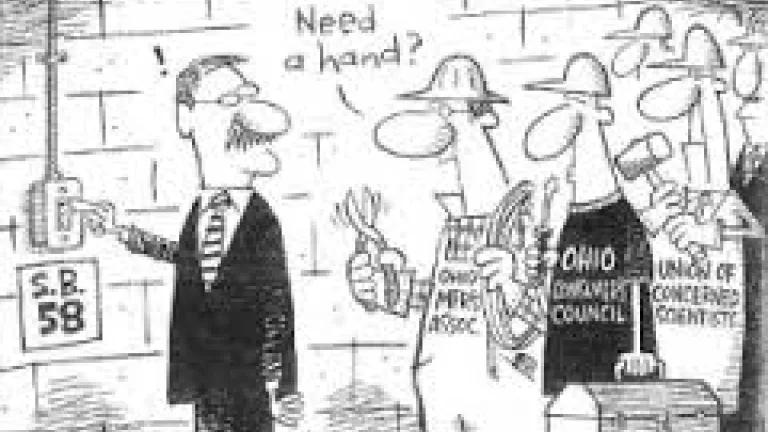
Something extraordinary occurred this winter that kept the lights on and people warm during record-breaking cold. Energy efficiency and demand response emerged to save the day, preventing potentially life-threatening power shortages across much of the Midwest and Northeast.
The subzero weather strained more than just our patience; it put a serious pinch on the energy grid. As demand surged, utilities scrambled to use energy efficiency - customers doing more with less energy - and demand response - conserving in response to specific power grid or economic signals - to keep power flowing.
For example, in January a host of gas utilities in Ohio and the State’s Public Utilities Commission urged customers to cut back on energy use as below-zero temperatures swept the Midwest, straining the capacity of the nation’s power grid and interstate natural gas pipeline system. PJM -- the regional transmission organization that keeps billions of watts of electricity flowing across 12 states – avoided blackouts by also requesting customer conservation, ramping up its demand response efforts, and purchasing emergency power from neighboring regions.
But energy efficiency and demand response shouldn’t only be emergency measures. Instead, states and utilities need to double down on these low-cost, commonsense tools to make the grid more reliable in the long term and prevent problems before they start.
The real reason for high costs: supply bottlenecks during peak times
Unfortunately, a troubling rhetoric has emerged around this winter’s threatened power shortage. The New York Times published an article Monday claiming that grid strain and increased costs to consumers will be exacerbated as U.S. Environmental Protection Agency moves forward in issuing rules to cut power plant emissions. However, the article misses the mark.
Much of this winter’s power shortages resulted from something else - competition between direct-serve natural gas customers and electric utilities. In the PJM transmission grid, for example, there are supply bottlenecks in regional gas pipelines. When demand surges during extreme weather, natural gas sent along these pipelines to heat homes often takes precedent over delivery to gas-fired plants owned by electric utilities with “non-firm” contracts, leaving utilities with either no supply or exorbitant costs to make up the shortfall. This phenomenon caused much of the shortage - and costs to consumers - this winter.
And while the New York Times attempts to place blame for the high energy bills at the foot of environmental regulation and coal plant retirements slated in the coming years, it gets it wrong: during peak times higher bills are primarily caused by increased energy consumption when energy prices are also the highest. This is something utilities and regulators have the power to address by delivering as much low-cost energy efficiency to consumers as possible. Continuing to run power plants harder each winter, while relying on any single fuel source to generate electricity, isn’t the answer.
Ohio’s story
Ohio, for example, has a golden opportunity to plan for the future as extreme weather conditions continue to worsen. Like many states, it has energy efficiency savings goals and has been successfully meeting - and in some cases exceeding - them in recent years. In 2012 alone, Ohio’s investor-owned electric utilities reported 1.6 million megawatt hours in savings from energy efficiency. But more needs to be done to avoid future strains on the grid.
Oddly, though the New York Times article uses Ohio as a case study for this winter's rash of high bills, it does not acknowledge the crucial role that energy efficiency and demand response played in the State and across PJM’s region to avoid potentially life-threatening blackouts. Nor does it identify their role for keeping costs down as states plan for future capacity needs.
clean energy being waged by a handful of special interests. Senator William Seitz is again pursuing legislation (SB 58) that would seriously undermine the effectiveness of Ohio’s energy efficiency and renewables laws and increase consumer's bills in the process. This, despite the necessity for more serious investment in energy efficiency to protect against the kind of grid strain and high costs that Ohioans experienced this winter.
Energy efficiency is similarly under siege in other states, including Indiana, even when it is needed most to provide both short and long-term relief – and consumers will ultimately pay the higher price for emergency power purchases when demand outstrips availability.
Rather than taking away this key tool, or blaming high costs in extreme weather on coal plant retirements, utilities and regulators would be wise to double down on energy efficiency to make power systems more reliable, affordable and sustainable. As even the Times article noted, “[r]isks are lower with diverse portfolios.”
Energy efficiency is key to this diversity.
